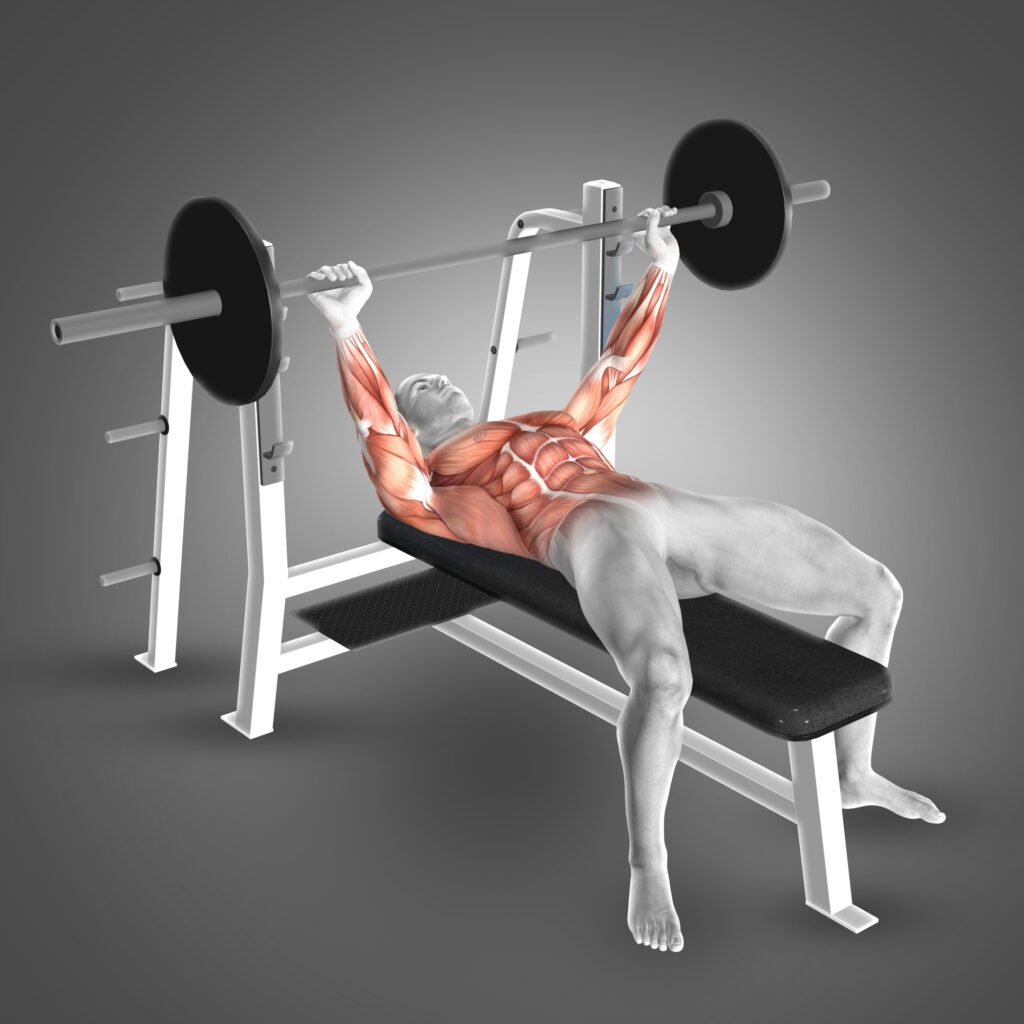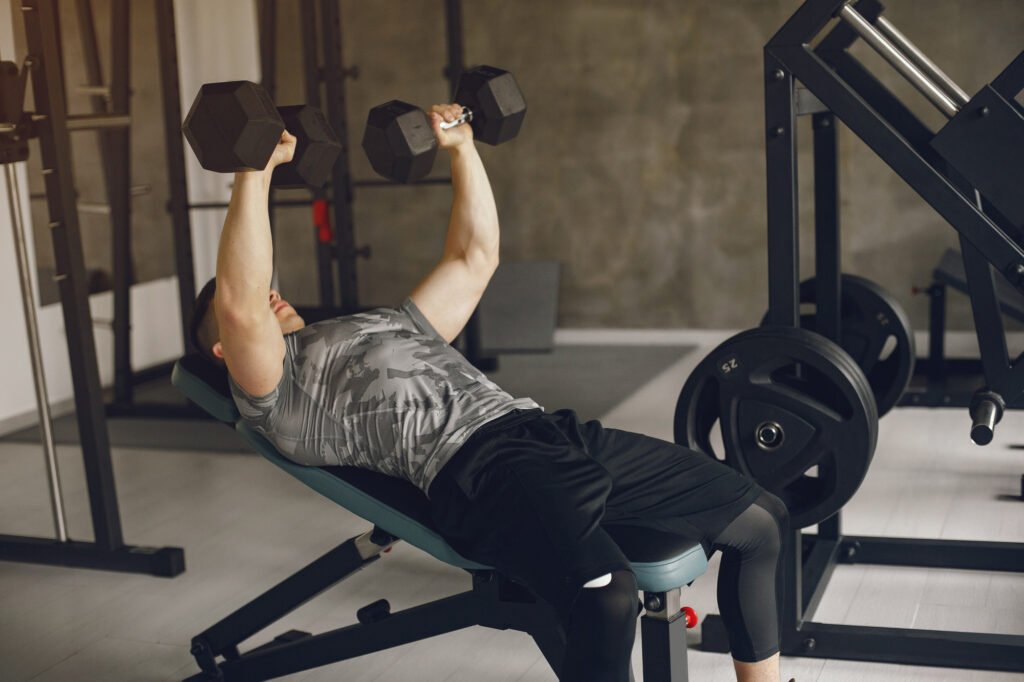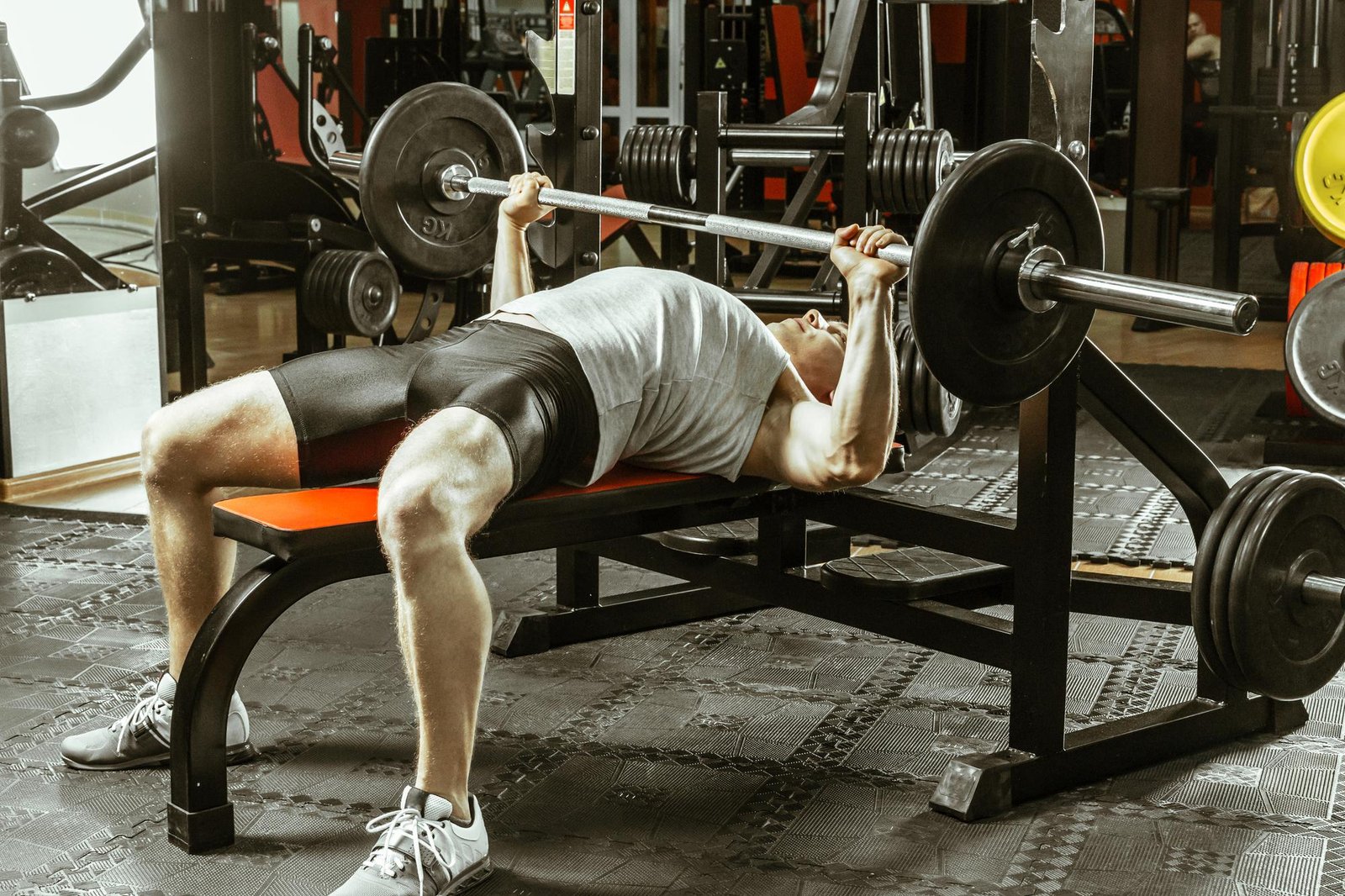Introduction
In the realm of strength training, few exercises command as much respect as the bench press. As we embark on this exploration, let’s first delve into the anatomy of this classic exercise. The b.press, a cornerstone of upper body workouts, not only hones strength but also serves as a litmus test for overall fitness. Its roots trace back to the foundations of bodybuilding and powerlifting, earning its place as a fundamental compound movement. Beyond the surface-level significance lies a fascinating interplay of biomechanics, muscle activation, and physiological responses. Join us on this journey as we unravel the importance of the b.press in sculpting a robust upper body, delving into the scientific intricacies that underscore its effectiveness. Brace yourself for a captivating blend of strength, science, and sweat as we lift the veil on the secrets hidden within the bench press.
Unveiling the Bench Press: A Comprehensive Guide to Muscles and Science

Anatomy of the Bench Press
The bench press is an iconic and fundamental exercise that forms the backbone of many strength training routines. Understanding the anatomy of this compound movement is crucial for anyone seeking to optimize their workout.
Muscles Targeted During the Bench Press
Chest Muscles
The primary beneficiary of the b.press, the pectoralis major, undergoes significant activation during the lift, contributing to the development of a well-defined and robust chest.
Shoulder Muscles
The anterior deltoids play a crucial role in stabilizing and lifting the bar, making shoulder muscles an integral part of the bench press movement.
Triceps
The triceps brachii are heavily engaged during the lockout phase, aiding in the completion of the lift and promoting overall arm strength.
Proper Form and Technique for Maximizing Muscle Engagement
Grip Width and Hand Placement
Adjusting grip width influences muscle engagement. A wider grip emphasizes the chest, while a narrower grip targets the triceps. Finding the right balance is key to a well-rounded workout.
Body Positioning on the Bench
A stable and planted back is essential for a powerful bench press. Arching the back slightly and retracting the shoulder blades optimizes muscle engagement and reduces stress on the shoulder joints.
Range of Motion
Completing a full range of motion ensures that all targeted muscles are activated throughout the lift. Avoiding half-reps maximizes the effectiveness of the bench press in building strength and muscle.
The Science Behind Muscle Growth
Understanding the science behind muscle growth sheds light on why the bench press is a cornerstone exercise in strength training routines.
Hypertrophy and Its Role in Building Muscle
Hypertrophy, the process of muscle growth, is stimulated by resistance training. The bench press, being a compound movement, induces significant hypertrophy in the targeted muscle groups.
Mechanisms of Muscle Activation During the Bench Press
Motor Unit Recruitment
The bench press activates motor units, which are groups of muscle fibers controlled by a single nerve. Increasing the load on the bar recruits more motor units, contributing to muscle strength and growth.
Muscle Fiber Types
Different muscle fiber types (slow-twitch and fast-twitch) are activated during the bench press. The dynamic nature of the exercise challenges both fiber types, fostering comprehensive muscle development.
Impact of Bench Press on Overall Upper Body Strength
The bench press isn’t just about building a chiseled chest; it’s a full-body workout that enhances overall upper-body strength. The interplay of various muscle groups during the lift creates a synergistic effect, promoting functional strength and muscular balance.
A Comprehensive Guide to Physiological Benefits and Common Mistakes

The bench press, a classic exercise in the world of fitness, is more than just a means to showcase strength. It offers a myriad of physiological benefits that extend beyond the immediate pumping of muscles. In this article, we’ll explore the science behind the bench press, focusing on the release of growth hormone and testosterone, its metabolic effects for fat loss and body composition, and its surprising connection to bone density. Additionally, we’ll shed light on some common mistakes during bench press and provide valuable insights on how to avoid them.
Physiological Benefits of Bench Press
Release of Growth Hormone and Testosterone:
Engaging in a proper bench press routine triggers the release of growth hormone and testosterone, two vital hormones for muscle growth and overall well-being. These hormones play a crucial role in repairing and building muscle tissue, enhancing strength, and even contributing to an increased sense of vitality.
Metabolic Effects for Fat Loss and Body Composition:
Beyond its muscle-building prowess, the b.press can be a powerful tool for those aiming to shed excess body fat. The high-intensity nature of the exercise stimulates metabolic activity, promoting fat loss and contributing to a more favorable body composition. Incorporating b.press into a well-rounded fitness regimen can complement weight-loss efforts and sculpt a lean physique.
Bench Press and Bone Density:
Surprisingly, the b.press is not just about muscles; it also impacts bone health. Weight-bearing exercises, such as the b.press, promote increased bone density. The stress placed on bones during the lift encourages them to adapt and become denser, reducing the risk of osteoporosis and enhancing overall skeletal strength.
Common Mistakes and How to Avoid Them
Overarching the back:
One common mistake during bench press is overarching the back, which can lead to improper form and potential injuries. To avoid this, focus on keeping the lower back in contact with the bench throughout the movement. Engage your core muscles to maintain a stable and controlled position.
Elbow Flare:
Allowing the elbows to flare out excessively can strain the shoulder joints and compromise the effectiveness of the exercise. Keep the elbows at a moderate angle, around 75 to 90 degrees, to ensure proper engagement of the chest muscles while minimizing stress on the shoulders.
Bouncing the bar off the chest:
Bouncing the bar off the chest not only diminishes the effectiveness of the exercise but also increases the risk of injury. Maintain a controlled descent and ascent, avoiding any sudden or jerky movements. Focus on a smooth and deliberate motion to maximize muscle engagement and minimize strain on the joints.
Read Also: Deadlift Mastery: Unlocking the Secrets to Strength
Bench Press Unleashed: A Comprehensive Guide to Variations, Accessories, and Fitness Goals
Welcome to the ultimate guide to bench pressing! Whether you’re a seasoned gymgoer or just starting your fitness journey, understanding the variations, accessories, and how to tailor b.press workouts to your fitness goals is crucial. Let’s dive into the world of bench presses and unlock the secrets to a well-rounded and effective training routine.
Bench press machine

The rhythmic clank of weights colliding and the determined grunts of fitness enthusiasts create a symphony in the corner of the gym dominated by the bench press machine. This contraption, a stalwart in the realm of strength training, is not just a piece of equipment; it’s a metaphorical forge where iron is molded into resilience and determination. As users lie back on the padded bench, hands gripping the cold steel bar, they embark on a journey of self-improvement. The bench press machine becomes a conduit for the transformation of ambition into raw power, as the repetitive motion of lifting and lowering the bar becomes a ritual of physical and mental fortitude. In this enclave of the gym, the b.press machine is not merely a tool; it is a testament to the relentless pursuit of strength, a vessel for the sculpting of both muscle and character.
Variations and Accessories
Different types of bench presses:
Incline Bench Press: Target your upper chest and shoulders, promoting well-balanced upper body development.
Decline Bench Press: Emphasize the lower chest and engage different muscle fibers for a comprehensive chest workout.
Standard Bench Press: The foundation of upper body strength, targeting the overall chest, shoulders, and triceps.
Incorporating dumbbells and resistance bands:
Dumbbell Bench Press: Unilateral movement enhances stability and corrects muscle imbalances.
Resistance Bands: Add variable resistance to challenge your muscles throughout the entire range of motion, promoting strength gains and stability.
The importance of accessory exercises for well-rounded development:
Include exercises like flyes, tricep dips, and push-ups to address weak points, enhance muscle symmetry, and reduce the risk of injuries. A holistic approach ensures a balanced and sculpted physique.
Bench Press for Different Fitness Goals
Strength training and powerlifting:
For those aiming to build raw strength and compete in powerlifting, focus on low-repetition, high-weight sets. Prioritize the standard b.press and include accessory exercises that target specific weaknesses identified during your lifts.
Hypertrophy-focused workouts:
If muscle growth is your primary goal, incorporate a variety of bench press variations, emphasizing time under tension. Moderate weights, higher repetitions, and a mix of incline, decline, and standard bench presses will maximize muscle hypertrophy.
Endurance and conditioning:
Enhance cardiovascular health and muscular endurance with higher-repetition sets, shorter rest periods, and circuit training. Include variations like push-ups and resistance band exercises for a dynamic and challenging workout that promotes overall fitness.
Mastering the Bench Press: A Comprehensive Guide to Programming, Progression, and Injury Prevention

Programming and Progression
Setting Realistic Goals
Embarking on a successful fitness journey begins with setting realistic goals. When it comes to bench pressing, it’s crucial to establish achievable milestones that align with your current fitness level. Setting realistic goals not only motivates you but also ensures steady progress without risking injury. Whether you’re aiming to increase your one-rep max or simply improve endurance, tailor your programming to match your unique fitness aspirations.
Progressive Overload and Its Importance
Progressive overload is the cornerstone of strength training and is particularly vital in bench press routines. Gradually increasing the weight, reps, or intensity challenges your muscles, prompting growth and strength development. By incorporating progressive overload into your b.press regimen, you’ll continuously push your limits and stimulate muscle adaptation, resulting in sustained progress over time.
Sample Bench Press Workout Routines
To put theory into practice, consider incorporating sample b.press workout routines into your training schedule. These routines should balance sets, reps, and intensity to ensure a well-rounded approach. From pyramid sets to 5×5 strength programs, experimenting with various structures will help you identify the routine that best suits your goals and preferences, keeping your bench press sessions both effective and engaging.
Injury Prevention and Rehabilitation
Common Bench Press-Related Injuries
Despite its benefits, the b.press is not without its risks. Understanding common bench press-related injuries is essential for injury prevention and long-term well-being. From shoulder impingements to muscle strains, being aware of potential risks empowers you to take proactive measures to safeguard your body during training.
Prehabilitation Exercises
Preventing injuries begins with proactive measures, and prehabilitation exercises are key. Incorporate shoulder stability exercises, rotator cuff stretches, and mobility drills into your warm-up routine to fortify your muscles and joints. By addressing weak points and enhancing flexibility, you create a resilient foundation that minimizes the risk of bench press-related injuries.
Recovery Strategies
Recovery is just as important as the workout itself. Implementing effective recovery strategies ensures your body can withstand the demands of regular b.press training. From adequate rest periods between sessions to incorporating foam rolling and stretching into your cool-down routine, prioritizing recovery supports overall muscle health and prevents overuse injuries.
Conclusion
In conclusion, our exploration into the realm of upper-body exercises has unveiled a plethora of scientific insights that underscore the significance of the bench press in achieving holistic fitness goals. As we recapitulate the key findings, it becomes evident that the b.press stands out as a versatile and remarkably effective exercise, engaging multiple muscle groups and promoting overall strength development. From its ability to target the chest, shoulders, and triceps to its influence on stability and core strength, the bench press emerges as a cornerstone in any well-rounded fitness routine. Therefore, it is not merely a matter of lifting weights; rather, it is about unlocking the full potential of your body. With this newfound understanding, we earnestly encourage our readers to embrace the bench press as an integral component of their fitness regimen. By incorporating this powerhouse exercise into your routine, you’re not just lifting weights; you’re sculpting a stronger, more resilient version of yourself. So, let the b.press become your ally on the journey to optimal health and fitness.
